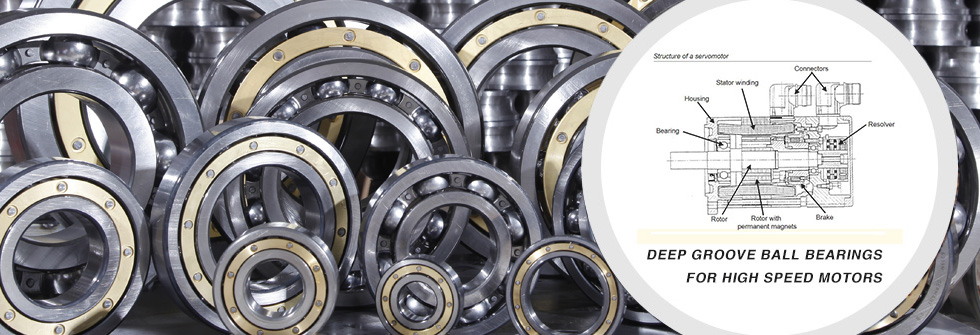SKF Bearing Lubrication News
2015-08-13Electric Motor Bearing Lubrication Faces New Challenges
The past 10 years have seen a quiet revolution in electric motor bearing relubrication. Adherence to fundamentally sound practices, such as ensuring work area cleanliness during relube and following electric motor OEM lube selection and relube interval recommendations, has gained acceptance as standard operating procedures. Accordingly, many lubrication-related electric motor bearing failures have been reduced.
As bearing relubrication methods have improved, new lube-related challenges have emerged. These include the practice of running motors at higher speeds, which results in higher bearing temperatures, and the increasing use of variable frequency drives in electric motors, which can negatively affect both bearing and lubricant.
To counter these new challenges, industry is responding with solutions such as advanced polyurea-based greases and hybrid bearings that feature ceramic rolling elements. Hybrid bearings have lower lubrication requirements than standard steel bearings and are excellent in many lubed-for-life electric motor bearing applications.
New Long-Life, Low-Noise Grease
Although some electric motor bearings, such as those used with vertical motors for submersible pumps, are oil-lubricated via a sump system, the vast majority of motor bearings are lubricated with grease. Greases are composed of a base oil and a thickener, which carries the oil between its lattice-like fibers. Base oils include mineral and other natural oils, and synthetic oils for high-temperature operation. Common thickeners include polyurea, lithium, calcium and sodium. Additives, such as antioxidants and antiwear compounds, are normally included in the mixture.
Recently, SKF selected an advanced rust-inhibiting, polyurea-based grease as the standard fill for its U.S. electric motor bearings. The new grease has a longer life expectancy and better quietness characteristics than the previously used polyurea grease. It is compatible with other polyurea-based greases and lithium greases, which are widely used in industrial applications. To lubrication technicians and maintenance organizations, this means a reduced risk of grease in compatibility problems when relubricating.
There have also been improvements in bearing technology, providing electric motor OEMs with alternatives to all-steel bearings in some demanding applications. The use of variable motor drives is more prevalent today than in the past. These drives allow electric motors to change speeds and to operate more efficiently. But they can also cause electrical currents to travel through motor bearings. Strong electrical currents can damage bearing surfaces, causing pitting or spalling. Even currents not powerful enough to cause bearing damage can produce localized hot spots and burn the grease, destroying its effectiveness.
One potential solution is the use of hybrid bearings or insulated bearings in some variable frequency applications. Hybrid bearings contain ceramic rolling elements; insulated bearings feature a ceramic coating on the bearing outside diameter. Both hybrid bearings and insulated bearings are nonconductive and are designed to prevent current-related problems. In addition, hybrid bearings have lower lubrication requirements than steel bearings and can be substituted for steel bearings in some lubed-for-life applications.











